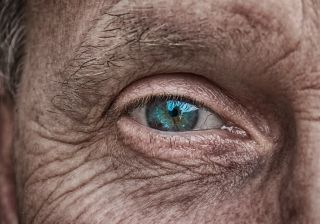Microbiome
Could Skin Microbiome Transfer Slow Aging?
New research shows promise as a therapeutic treatment.
Posted October 12, 2023 Reviewed by Tyler Woods
Key points
- Skin health has profound psychological effects on humans.
- Micro-organisms play a central role in skin health.
- Microbiome transplantation may be a new therapeutic treatment for skin aging.

When I was young, I entered a relationship with an older partner. When my father was informed, he told me, "An old partner makes you age."
New findings indicate there may be a scientific explanation on his side.
Skin aging has detrimental effects on body image and self-esteem.
Despite often being overlooked, the skin, as the body's largest organ, plays an essential role in our health and well-being. The skin is a barrier that protects against pathogens, physical and chemical stimuli, and controls water loss through evaporation. It also plays a role in sensation and vitamin D synthesis. Last, but by no means least, the skin is the main component of beauty.
Skin aging refers to the changes that occur in the skin as a result of the natural aging process. The visible symptoms of skin aging can vary from person to person, but typically include fine lines and wrinkles, age spots and hyperpigmentation, the loss of elasticity, and dryness or roughness. These changes are continuous and inevitable: they are histological, morphological, and physiological.
Skin aging can significantly impact self-esteem and body perception. Aging skin may contribute to social anxiety, isolation, and a negative self-image. These factors are often linked to chronic illness and decreased motivation for preventive health behaviors like exercise. An aged appearance, particularly for women, is also linked to workplace discrimination [1,2].
The skin microbiome plays an essential role in skin health.
The skin's microbiome, the specific and individual layer of bacteria that lives on everyone's skin, plays a main role in proper functioning. An imbalance in the microbiome community, or dysbiosis, may be associated with skin disorders. Skin microbes help prevent invading pathogens and boost immune defense. New data suggests that the microbes living on the skin also impact the skin's aging process.
A recent study revealed that changes in the skin's biophysical conditions are associated with alterations in the skin microbiome during aging. The researchers propose that species, strains, and gene content interact with the biophysical characteristics of the skin during aging. It seems that the movement or dispersion of collagen molecules in the extracellular matrix is associated with the composition and functional potential of the skin microbiome. This includes the abundance of bacterial strains found in nosocomial (originating in a hospital) infections and the abundance of antibiotic-resistance genes.
Both internal and external factors influence the alterations of the skin microbiome during aging. Intrinsic factors include chronological skin aging, which involves a series of unavoidable physiological changes over time. These changes include a decrease in collagen production and skin thickness. Extrinsic factors include lifestyle-related factors such as diet, medication, reduced social contact, cosmetics, and environmental factors such as pollution and UV radiation [3,4].
Microbiome transplantation as a new therapy for skin aging.
The skin microbiome can be easily transferred from one individual to another, especially among individuals who live in close proximity. Breathing, touching, sleeping in the same bed, and many more various daily activities allow for bacteria to rub off on another person or be aerosolized and spread. Several studies have demonstrated that cohabitation with pets leads to an exchange of gut and skin microbes between pets and humans.
Microbiome transplantation is a procedure in which the skin microbiome of a healthy individual is transferred to a cleansed and disinfected area of another person's skin to improve the recipient's skin condition. This method has been used for therapeutic purposes and has shown promising results. However, the research is limited [5].
The influence of other people's microbiomes on the balance of the skin's population of bacteria may have health effects in humans. The transplantation of microbes from healthy and young individuals to others may provide a new opportunity in the field of hygiene to develop therapeutic strategies for maintaining skin health and preventing skin aging.
References
1. Zhou, W., Fleming, E., Legendre, G., Roux, L., Latreille, J., Gendronneau, G., . . . Oh, J. (2023). Skin microbiome attributes associate with biophysical skin ageing. Exp Dermatol.
2. Gupta, M. A., & Gilchrest, B. A. (2005). Psychosocial aspects of aging skin. Dermatol Clin, 23(4), 643-648.
3. Skowron, K., Bauza-Kaszewska, J., Kraszewska, Z., Wiktorczyk-Kapischke, N., Grudlewska-Buda, K., Kwiecińska-Piróg, J., . . . Gospodarek-Komkowska, E. (2021). Human Skin Microbiome: Impact of Intrinsic and Extrinsic Factors on Skin Microbiota. Microorganisms, 9(3).
4. Kates, A. E., Jarrett, O., Skarlupka, J. H., Sethi, A., Duster, M., Watson, L., . . . Safdar, N. (2020). Household Pet Ownership and the Microbial Diversity of the Human Gut Microbiota. Front Cell Infect Microbiol, 10, 73.
5. Callewaert, C., Knödlseder, N., Karoglan, A., Güell, M., & Paetzold, B. (2021). Skin microbiome transplantation and manipulation: Current state of the art. Comput Struct Biotechnol J, 19, 624-631.


